
Janette Edson
Amazed at how awesome science can be!
Favourite Thing: My favourite thing in science is the “doing” part aka. actual experiments, especially when you have no idea what the result will be. The sense of anticipation that something is going to produce a result or demonstrate something interesting cannot really be matched!
My CV
School:
Blackbutt State School, QLD 1990-1996; Yarraman State School, QLD 1997-1999; Nanango State High School, QLD 2000-2001
University:
University of Queensland (Bachelor of Science in Microbiology) 2002-2006; Griffith University (Masters of Science in Clinical Biochemistry 2007-2008); University of Adelaide (PhD, Forensic Genetics/Molecular Biology 2009-current)
Work History:
The Australian Genome Research Facility, Brisbane 2006-2008
Employer:
Australian Centre for Ancient DNA (ACAD) The University of Adelaide
Current Job:
PhD student (though that’s not just a job, it is a lifestyle)
Me and my work
I’m developing new methods for forensic identification of people from degraded sources of DNA.
While T.V shows like CSI have done much to show just how important science is when it comes to solving crime, they don’t tell the whole story – in fact, forensic science is much more interesting and exciting in real life.Forensic science is all about applying what we know about the world and using the science to interpret evidence. One of the key parts of criminal investigation is identification of the people involved: whether it be identification of a murder victim, or linking a criminal to a crime scene, being able to reliably show people have been involved in a crime is key to being able to determine what has happened, and also help bring the bad guys to justice!
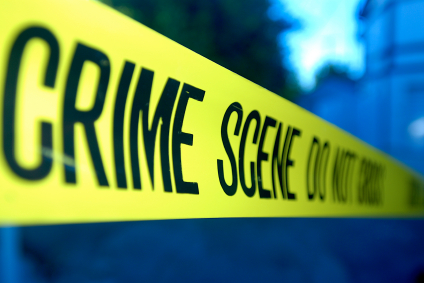
One of the most powerful methods of identifying people is through the use of DNA (deoxyribonucleic acid). DNA is what makes us, well, us! DNA consists of four nucleotides or bases – adenine (A), guanine (G) cytosine and thymine (T). These bases are linked together with a backbone, and pair with each other (A with T, G with C) to form a double helix. Our DNA makes up our genome, a copy of which is found in every cell in your body. Much of the human genome is identical from person to person but there are differences in certain areas, and even scattered across the entire genome – it is these differences that make you unique.
From DNA, forensic scientists can identify you from your brother, sister, mother, father and neighbours!
Forensic scientists have developed methods to analyse these parts of the genome that vary from person to person. By taking several of these markers of difference and combining them to make a DNA profile, we can compare the samples from the unknown sample to an individual’s profile and using probability say how likely it is that the DNA from the unknown sample belongs to our suspected individual. This is what we can use to identify people, and with the number of markers used it is very powerful and reliable.

An example DNA profile – the peaks are pieces of DNA from different markers in the genome, separated by size, that when combined form a ‘DNA profile’.
However there is a challenge that you won’t see on CSI – DNA degrades! Over time and due to natural processes, DNA will break down, fragmenting and becoming damaged. While forensic scientists can type ‘good’, non-degraded sources of DNA, degraded DNA does not produce good results using standard forensic DNA profiling methods. Degraded DNA is a big problem as currently, evidence that could put someone at the scene of the crime cannot be used or that remains of someone who is missing cannot be identified because the DNA is too degraded. This challenge covers many sources of DNA including material that has been stored for long periods of time (eg. cold case evidence that is now being tested for DNA), skeletal remains, tiny traces (eg. single cells in fingerprints) and something that you have lots of and isn’t that old or degraded: hair!
Because of the way hair grows, there aren’t many cells left in a mature hair shaft, and therefore very little DNA. When a hair has finished growing, the hair follicle shrinks and the hair eventually will fall out to make room for a new hair. Hair that has finished its growth cycle is known as telogen hair – this is the hair generally found in your hairbrush, and that falls out when you run your fingers through your hair.
My research is focused on the recovery of DNA from single pieces of hair. While the DNA in hair is degraded and is a challenge to analyse, hair can be a very important piece of forensic evidence. Because hair sheds and falls out so easily, it is often recovered as trace evidence, and often there isn’t any other evidence that could be used for DNA analysis. Being able to use hair shaft for DNA identification would be valuable to forensic scientists because they would be able to identify people from a single piece of hair recovered as trace evidence!
So, how am I working on this? Well I’m very fortunate as there is a whole field of biology dedicated the analysis of degraded DNA. That field is ancient DNA research. While ancient DNA researchers are busy studying samples of DNA from the past (things like extinct animals, museum specimens, and skeletons from early human societies – it is equally as interesting as forensic science!) the techniques they have developed have the potential to help forensic science. Using the techniques developed to study ancient DNA, including new DNA analysis methods, I’ll be able to develop new methods specifically for the recovery and analysis of the tiny amounts of fragmented DNA found in hair for forensic identification.
My Typical Day
Eat, Sleep, Science!
A typical day? They don’t really exist in science – everyday is different! But to give you an idea what “a day in the life as a scientist” is for me, here’s some of the things I fit into an ‘average’:
Because I work on degraded DNA, I have to use special facilities and clean-rooms to do most of my research in. These rooms are free of DNA, dirt and dust and are in buildings separate from our offices and the labs we do downstream work in all to prevent contamination of the degraded DNA samples. This is the first stop of the day as I have to follow protocol I can’t go to the office first. Basically because our bodies are covered in DNA (think skin cells, sweat… ewwwww!) I have to cover up head to toe to prevent contamination from myself! So I put on a suit, face mask and then enter the lab. Upon dressing in the required suit, I can do my DNA extractions and set up any reactions for downstream analysis (eg. forensic DNA profiling, DNA sequencing).
After cleaning the lab, and changing back into regular clothes, I can head to our other labs and the office. Here I can analyse the DNA samples I prepared earlier.
Then comes the best part – once I have results I have to analyse them, discuss the findings, finally figure out what the story is and then write it up for publication in a relevant scientific journal.A big part of my daily life is not only research at the lab bench, but also keeping up to date of progress in the field and researching other people’s work, so I am always reading and catching up on the latest science news! I also have emails, meetings and collaborations to follow up on. Sometimes I attend lectures or workshop or present at conferences. The favourite part of my day is working as a volunteer assisting with science communication and outreach both at the University of Adelaide and the RiAus.
What I'd do with the money
A open day to allow students to experience forensic biology and ancient DNA research
I would use the funds to host a workshop day for students to experience the very interesting area of science that I’ve had the opportunity to be part of. As I’m part of the ancient DNA group at the Australian Centre for Ancient DNA, I’d like to allow students to experience forensic DNA research but also the very fascinating area of ancient DNA research, and how my colleagues can use the very small traces of DNA left behind to reconstruct and understand the past. Students would be able to experience first hand the world of forensic and ancient DNA research and meet researchers studying the most challenging of DNA sources for identification, evolutionary biology and climate change.
My Interview
How would you describe yourself in 3 words?
Passionate, Inquistive, Talkative
Who is your favourite singer or band?
This is a hard one because I like so many. At the moment, probably Jack White.
What is the most fun thing you've done?
Recently, one of the most fun things I’ve done is played paintball! Though the bruises afterwards weren’t so much fun….
If you had 3 wishes for yourself what would they be? - be honest!
1. Never-ending research money so I can stay employed and work on anything I want 2. A long healthy life for everyone 3. And…, world peace?!
What did you want to be after you left school?
Lawyer or Scientist. Had the idea of becoming a doctor for a brief while, but decided research is more my thing.
Were you ever in trouble in at school?
Yes! But only for talking too much in class; once a chatterbox, always a chatterbox. Though I did get good grades….
What's the best thing you've done as a scientist?
The travel – I’ve been to Austria and Germany, and closer to home – Sydney, Canberra and later in the year, Hobart. I’ve met some incredible scientists and been very inspired by sharing my research on my travels. It’s a great perk of the job!
Tell us a joke.
Did you hear about the famous microbiologist who traveled in thirty different countries and learned to speak six languages? He was a man of many cultures.
Sports followed
I’m not a really hardcore fan but I do like soccer, AFL and mixed martial arts
Favourite team
Bayern-Munich for the Soccer; for mixed martial arts, the fighter Wanderlei Silva; and for AFL I don’t have a fave team.
My profile link:
https://lithium.imascientist.org.au/profile/janetteedson/
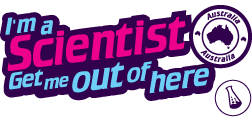

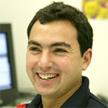
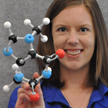
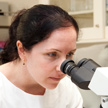


 Print this profile
Print this profile